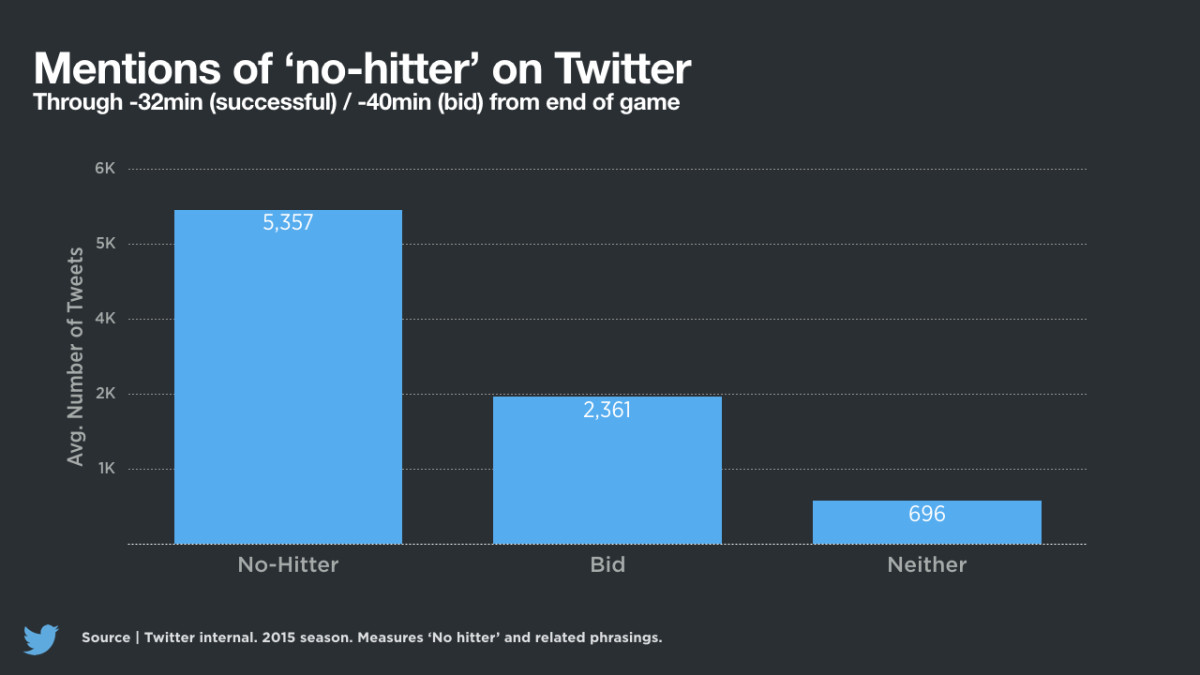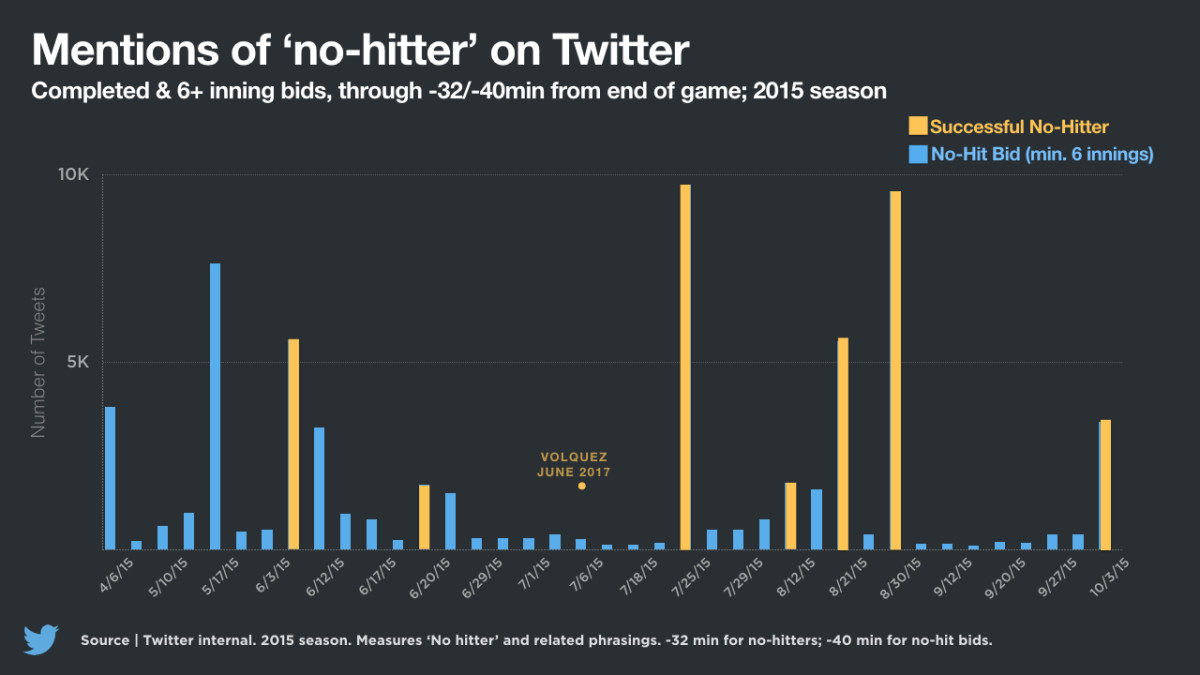You won't jinx a no-hitter by tweeting about it

Say the unspeakable phrase “no-hitter” during a pitcher’s attempt at the lofty feat, and you may receive a side-eye from whoever you’re around for allegedly jinxing the player. But, on Twitter, how does tweeting the term negatively impact a pitcher’s chances at history?
According to Twitter, it doesn’t.
Since the 2015 MLB season, the social media company has been tracking data to see if there’s any relationship between “no-hitter” tweets and related phrasings to failed attempts. In a recent analysis, Twitter analyzed the 2015 season, which saw 34 no-hit bids through six innings and seven total during the season. In 2016, there was just one no-hitter.
Below is a graphic highlighting the number of Tweets from the 2015 campaign in addition to the no-hitter thrown by Miami Marlins pitcher Edinson Volquez this past weekend, the first no-no for the current season. One can see a pattern that with the successful no-hitters: there are actually more tweets than the failed ones, generally speaking.

Twitter broke down the tweets even further by measuring the number of no-hitter tweets from the beginning of each game until 40 minutes before the final pitch that broke up the no-hit bid. Since the average MLB game lasted three hours in 2015, each inning was about 20 minutes.
For successful no-hitters, Twitter measured no-hitter tweets from the beginning of each game until 32 minutes before the final pitch; the average time for a no-hitter game was 2:31 two years ago.

With all of the information and data, Twitter discovered that there were twice as many “no-hitter” mentions in roughly the first six innings during a successful game than one where a pitcher failed to complete the bid. The end story for fans: Tweet all you want because it doesn’t negatively affect the chances for a pitcher to throw a no-no.
